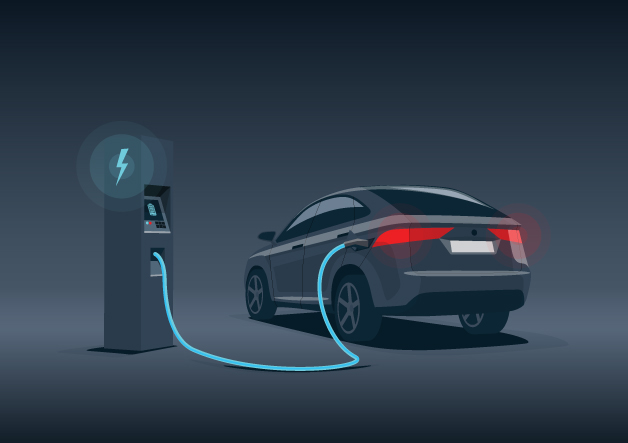The electric car has no future’-That’s what some said in 1908 when Henry Ford introduced his cheap Model T. Despite his new assembly line manufacturing concept, that single statement rendered electric vehicles (EV) obsolete.
EVs had been around since the 1830s and by 1900 were 38% of the U.S. market for ‘horseless’ carriages. The market then dwindled to virtually nothing for the larger part of the 20th century.
The resurgence of the EV market is following a similar but opposite exponential change, with the global passenger car stock at over 10 million in 2020. Despite a pause due to the pandemic, the market is set to rise at a compound annual growth rate of 17.4% in 2021 to close to the $1 trillion mark by 2027.
Such dramatic growth naturally spawns many approaches to the implementation of the EV solutions in motor, battery, charger and electric drive technologies, with some inevitably destined to fall by the wayside. Some are intentional stopgaps. Hybrid vehicles that have both an internal combustion engine (ICEEV) and electric drive are sure to become eventual historical curiosities when manufacture of reciprocating engines is down to unviable levels. Or, so the newcomers to the markets say, with their heavy investment in battery-only technology.
Comparing different country approaches, many have no plans for ICE bans and even major economies are setting 100% zero-emission vehicle sales targets decades into the future. (See Figure.)
Market drivers
Government targets for emissions reduction are driving the EV sales increase along with subsidies for buyers as well as for vehicle and charging infrastructure manufacturing. These benefits offset the still-higher price tag of the EV compared with a gas-powered vehicle. The buyer’s choice will eventually come down to availability, as ICE-only vehicles are no longer offered.
There are other factors at play. For example, EVs are potentially components of sustainable energy-generation microgrids, with the EV battery providing local and grid storage to help further reduce dependence on utility power generation and associated emissions. Still, drivers are unlikely to use that scenario as a rationale for buying an EV.
Perhaps a stronger consumer incentive is the aspirational side of owning what has become a mobile data center, with the perceived benefits of extra safety, autonomous driving and continuous communication between vehicles and roadside infrastructure. These features are to an extent available in ICE cars now, but they are bundled into an EV on the back of the already-considerable processing power necessary to get the best efficiency out of the electric drivetrain.
Of course, the manufacturer must carefully manage the perceived and real dangers of catastrophic failure modes of the electronics and hacking. Manufacturers tout their dual-redundant automotive designs, ensuring there is always backup. By comparison, the first fly-by-wire aircraft had typically three flight control computers in sync. If one disagreed, the other two were taken as correct. The space shuttle had five. Make of that what you will, and design for safety remains a major topic in EV electronics.
What an EV user thinks about with their sensible hat on is the practicality of getting from point A to B without running out of charge. They might think it’s all about the size of battery and they will probably realize there is a weight trade-off. That simple analysis has underpinned the struggle to make an EV viable since the first one with its DC motor and primary cell was strapped to the back of a cart in 19th century Scotland.
Power conversion efficiency is key
While batteries are more energy-dense, cars have gotten heavier. Ancillary loads such as air conditioning, heating and power-assisted everything have also increased substantially. All this adds to the increased expectation of on-road performance to a level where pseudo-superlatives run out – what comes after “insane?” This has curiously resulted in EVs that over several years improved dramatically in battery and drive technology but still only reach a few hundred miles range, even less with the family, the dog and their accessories.
A focus for automotive engineers is to extend battery life by minimizing drive inverter and motor losses and to return energy to the battery while braking or coasting. It’s also a virtuous circle to an extent; lower loss means lighter heatsinks and less traction demand on the battery. If losses are lower, currents are lower, and cables and connectors also get smaller and lighter. Hardware and energy costs can reduce, too, if you consider the larger payback rather than at the component level.
Efficiency also enables faster charging
When the car is safely connected to utility AC or DC power, range anxiety might subside, but stress levels rise again as time ticks by.
Efficiency and speed of the charging process are therefore also important. The power electronics in the EV drive, on-board charger and the roadside or home charger are comparable. They all convert AC/DC or vice versa with some DC/DC thrown in, using switched-mode power supplies. The semiconductor switch is key. Its losses when on and during switching transitions dominate the whole power conversion process.
Engineers have choices in the topology of power conversion stages, power bus voltage levels and semiconductor switch technology, with consequent trade-offs.









